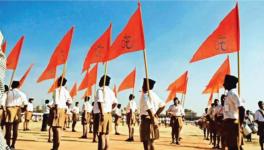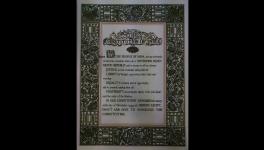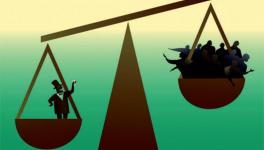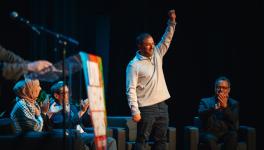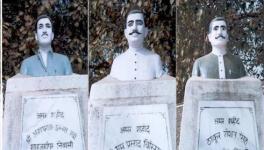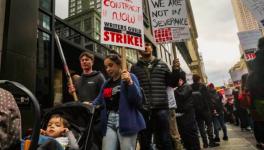When Stalin Invited Bhagat Singh to Soviet Union
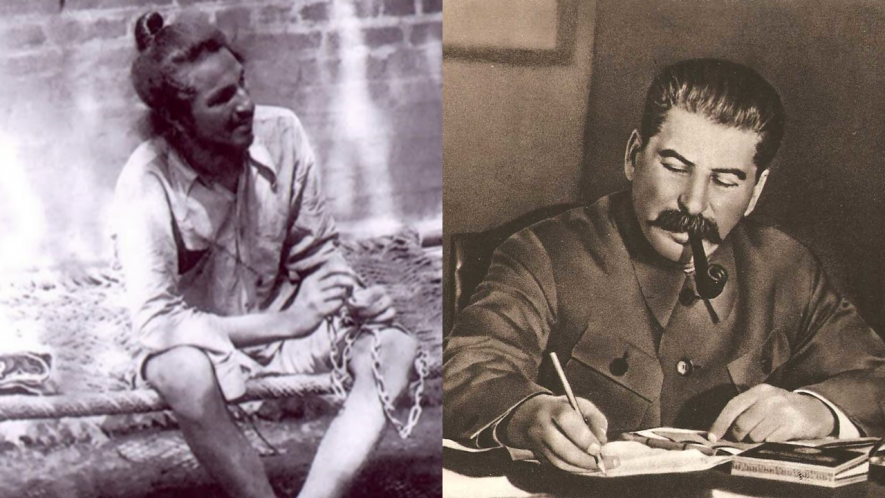
A lesser-known event from the annals of the Indian revolutionary movement is the “invitation” that was sent to Bhagat Singh by the Soviet leader, Joseph Stalin. This invite could not reach Singh, so historians can only speculate on what might have happened if it had been received and accepted. There is no doubt that had it all gone as planned, it had the potential to change the course of our freedom struggle.
The person who connected Bhagat Singh and Stalin was Shaukat Usmani, one of the founding members of the emigre Communist Party of India established in Tashkent in 1920. Usmani was sent to India by MN Roy to establish contact with the Indian nationalists. He came in contact with the revolutionaries through Ganesh Shankar Vidyarthi, the famous editor of the Hindi daily, Pratap, which was published from Kanpur in 1920s.
Bhagat Singh worked as a sub-editor at Pratap. He even reviewed Usmani’s political-cum-travel memoir, Peshawar to Moscow: Leaves from An Indian Muhajireen’s Diary, for the newspaper. Even though Usmani was associated with the communist movement, he maintained active contact with the armed revolutionaries and updated the Comintern about their activities.
In 1928, when Usmani was about to leave for the Sixth Congress of the Communist International, he invited Bhagat Singh and his close associate, Bejoy Kumar Sinha, to come with him to the Soviet Union. Usmani wrote about this incident, “Now I don’t exactly remember when I first met Sardar Bhagat Singh. Either I met him in Lahore or in Kanpur…At that time [the Hindustan Republican Association] HRA was being transformed into HSRA [Hindustan Socialist Republican Association] and it was decided that the new organisation would work in cooperation with the Communist International…I was informed that before they drop armed actions by individuals they would organise some important actions which were already in their list…I told Bejoy Babu (Bejoy Kumar Sinha), ‘Come on, let’s go to Moscow.’ Personally, I believed that Bhagat Singh and Bejoy Sinha’s presence in Moscow would have meant active armed assistance from the Soviet Union.”
Along with Singh, Bejoy Kumar Sinha was in charge of international relations of the HSRA. He confirms this invitation by Usmani in his book, New Man in the Soviet Union. He writes, “Shaukat Usmani, who as representative of the Communist Party of India, was about to leave for Moscow to take part in the Sixth Congress of the Communist International, asked me and my associates to come along with him to the Soviet Union as representatives of the revolutionary movement. I discussed his invitation with Bhagat Singh and we decided that it was not the right time. We decided that we will go to Moscow once we had executed our plans.”
That Usmani had invited Bhagat Singh and Sinha to visit the Soviet Union as representatives of the HSRA is also confirmed by a stalwart of the Indian communist movement, Muzzafar Ahmad. In his autobiography, Myself and the Communist Party of India, Ahmad mentions Usmani and Sinha’s meeting. He also says that Sinha gave Usmani Rs.200 to undertake the proposed journey, while Usmani assured him of financial help from the Soviet Union.
Usmani next went to the Soviet Union in 1928, where he was included in the Presidium of the historic Sixth Congress of the Communist International. This conference began on 17 July 1928 and ended on 1 September 1928. Interestingly, it noted the activities of the HRA while discussing the colonial question. It recognised the rise of the HRA as a response to the failure of bourgeois parties such as the Indian National Congress, which began as a radical petty-bourgeoisie party but as the struggle proceeded, it became the party of the bourgeois reformists.
The Comintern observed, “…movements such as…Gandhism in India…were originally radical petty-bourgeois ideological movements which, however, as a result of their service to the big bourgeoisie, became converted into a bourgeois nationalist-reformist movement. After this, in India…there was again founded a radical wing from among the different petty-bourgeois groups (e.g. the Republican Party…) which stands for a more or less consistent national-revolutionary point of view.”
Unfortunately, as soon as Usmani returned from Moscow, he was arrested in the Meerut Conspiracy Case which began in March 1929. Meanwhile, Bhagat Singh and his comrades had assassinated John Saunders in December 1928 and were on the run. After the Meerut Conspiracy Case began, Bhagat Singh and BK Dutt, on behalf of the HSRA exploded two bombs in the Central Assembly to protest the anti-worker Public Safety and Trade Dispute Bills, and courted arrest.
Remarkably, before the decision to throw bombs in the Central Assembly, HSRA leaders held the view that Bhagat Singh should be sent to the Soviet Union since he was already an absconder in the Lahore Conspiracy Case. It was decided that some other revolutionary would throw the bomb. However, on the insistence of Sukhdev, Bhagat Singh was selected for the task as it was agreed that he could present the party’s point of view before the court and in the press in the best possible way. HSRA members were not aware that Usmani was carrying a message for them from the Soviet Union. Due to his arrest, even the latter was unable to communicate Stalin’s message for Bhagat Singh and the HSRA.
Later, Usmani, in an article in the Hindi journal Nai Zameen, published from New Delhi, wrote that before he was leaving for India, Stalin asked him to convince Bhagat Singh to come to Soviet Union. According to Usmani, Stalin’s words were, “Ask Bhagat Singh to come to Moscow.”
Now the question arises, how did Stalin come to know about Bhagat Singh?
According to Virender Sindhu, niece and biographer of Bhagat Singh, Stalin and the Comintern might have learnt of Bhagat Singh through two Ghadarite revolutionaries, Baba Santokh Singh and Baba Gurmukh Singh, who were working closely with the Communist movement in Punjab. They had even tried to recruit Bhagat Singh to their Kirti group.
However, the interest shown by Stalin in Bhagat Singh and the Indian revolutionary movement might also have been the result of the thesis adopted by the Sixth Congress on the strategy and tactics of the national liberation movements in colonies such as India and China. The Communist International was already aware of the Hindustan Republican Association and considered it as a petit bourgeoisie-led national revolutionary organisation, in contrast to the national-reformists led by the Congress.
The Sixth Congress adopted a very sectarian position on tactics and strategy of anti-imperialist struggle in colonies. This Congress proposed that Communist Parties in colonised countries “should from the very beginning demarcate themselves in the most clear-cut fashion, both politically and organisationally, from all the petty-bourgeois groups and parties”.
However, with respect to the national-revolutionary parties led by the petty-bourgeoisie, the Sixth Congress said that a temporary union or cooperation with them was possible “provided that [the national revolutionary movements was a] genuine revolutionary movement, that it genuinely struggles against the ruling power and that its representatives do not put obstacles in the way of the communists educating and organising in a revolutionary sense the peasants and wide masses of the exploited”.
As Usmani knew about the transition of the HRA into the HSRA and their decision to work for the goals of socialism, it is quite possible that he appraised the executive committee of Communist International on Bhagat Singh and his plans to reorganise the HRA, which might have sparked the interest of Stalin in Singh.
After the arrests of Bhagat Singh and Sinha in the Lahore Conspiracy Case, HSRA decided to send veteran Ghadar Party leader Prithvi Singh Azad to the Soviet Union for ideological and military training but Azad could not go there immediately. So, HSRA chose Surendra Pandey and Yashpal (the future Hindi novelist) in his place. However, the sudden death of its commander-in-chief Chandrashekhar Azad in February 1931 foiled the party’s plans.
Yashpal was also arrested in a few months and eventually Pandey was also put behind bars. After his release, Pandey tried to revive the HSRA in Kanpur and worked in close coordination with the communists. From the courtroom, Bhagat Singh and his comrades also sent a telegram to the Communist International expressing their respect and solidarity on the death anniversary of Lenin on 21 January 1930.
Even though the HSRA members tried to go to the Soviet Union, the journey eluded them. It was only after the withdrawal of the British from India that Bejoy Kumar Sinha was able to make a trip to the Soviet Union.
Prabal Saran Agarwal and Harshvardhan are PhD scholars at JNU. The views expressed are personal.
Get the latest reports & analysis with people's perspective on Protests, movements & deep analytical videos, discussions of the current affairs in your Telegram app. Subscribe to NewsClick's Telegram channel & get Real-Time updates on stories, as they get published on our website.










